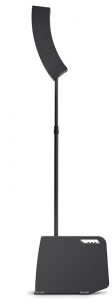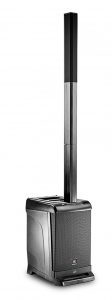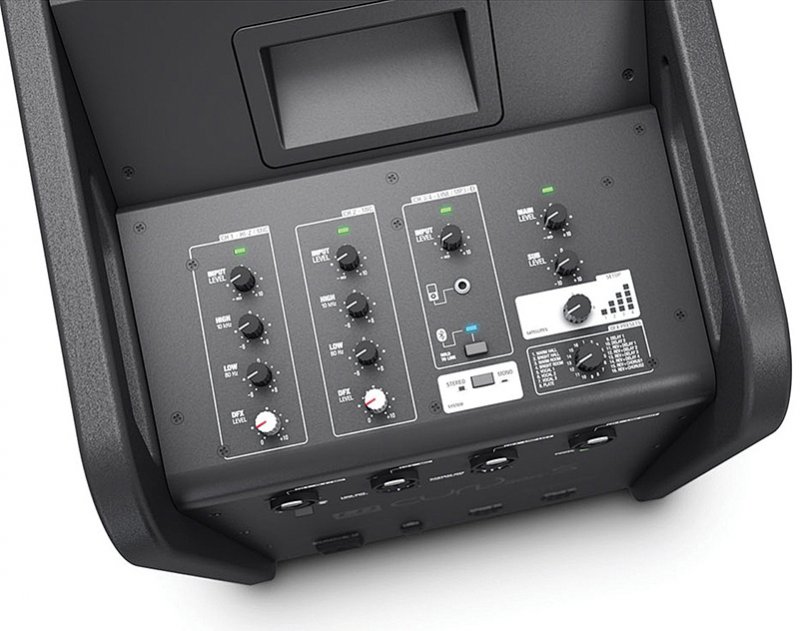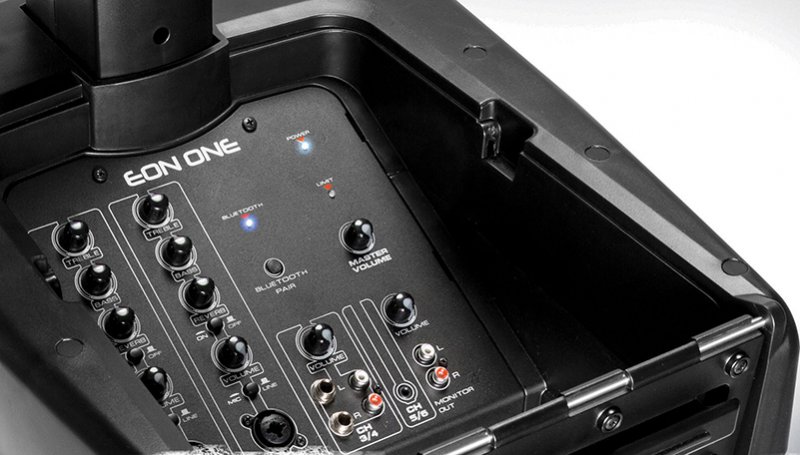Group Review: 2 Portable Line Array PA Systems
Group Review: 2 Portable Line Array PA Systems
For the majority of musicians, choosing a portable PA system (or any audio equipment for that matter) is a compromise of performance, function and price. For this review, I’ve been looking at two portable line array PA systems from long established American PA manufacturer JBL and rather newer German player LD Systems that together highlight this conundrum. The similarities but subtle differences demonstrate how important it is to understand your specific needs before settling on a purchase.
The two units I’ve been lucky enough to trial are LD Systems’ Curv 500 ES, which has a price tag of $2099, and JBL’s Eon One, the rrp for which is just slightly lower at $1999.
Both of these products are designed for use by solo artists, or small groups on the go. Musicians who want to be able to carry all their own gear into a venue, set up without fuss, sound great in often awkward spaces, and then pack it all down into their car afterwards. Equally, of course, they are handily versatile for venues like restaurants, and the likes of community hubs and schools where amplified sound is sometimes needed – but size and storage are an issue.
What sets these two units apart from traditional PA set ups is their use of line array speakers. Concert goers will recognise line arrays as the stack of speakers usually suspended above the stage in a vertical, convex column. They have become the go-to choice for large concerts and arena shows due to their excellent projection of sound over long distances. However due to their high cost of manufacture, there haven’t been many products taking advantage of this technology outside of festivals and big concerts.
Without delving too much into the science (which any other day of the week I’d happily wax lyrical about), they achieve this by stacking the drivers (or speaker cones) one on top of another in a vertical fashion. This allows each driver to deliver sound towards the audience in a direct, cylindrical fashion, as opposed to traditional speaker enclosures that project in a more spherical direction. Long story short, with a line array you get more volume, more efficiently and you don’t have to blow off someone’s ears at the front of the crowd in order for the punter at the back to hear everything.
So what are they like?
 LD Systems Curv 500 ES – rrp $2099
LD Systems Curv 500 ES – rrp $2099
Taking a look first at the LD Curv 500 ES, we are greeted by a 10” powered sub about the same size and weight as a small bass amp (16.5 kg to be precise). Built into the sub are four XLR-combi jacks allowing either microphones or line input devices to be connected.
The first input also features a hi-z switch to plug a bass or guitar directly into the PA, great for acoustic guitarists or bass players who don’t have a DI handy.
We also have a basic high and low shelf EQ available for each channel, an FX level with 16 different presets including reverb, delay and chorus and a level control for either a 3.5mm input from your phone or Bluetooth device.
Lastly we have a master volume control for the sub and the accompanying array. These conveniently and snugly clip into one another and are mounted on top of a black pole that is screwed into the sub itself. The result is an elegant and easy to set up system with a reasonably small footprint.
JBL Eon One – rrp $1999
 Similarly, the Eon One also takes shape with a sub and satellite system, although its presentation is slightly different. Rather than mounting the array on a pole, the array is already permanently assembled in one black oblong and can be mounted directly into the sub. It can also be raised higher with two extension pieces, the array then mounting on top of these.
Similarly, the Eon One also takes shape with a sub and satellite system, although its presentation is slightly different. Rather than mounting the array on a pole, the array is already permanently assembled in one black oblong and can be mounted directly into the sub. It can also be raised higher with two extension pieces, the array then mounting on top of these.
Everything comes tidily packed away in a compartment behind the sub itself. A handle folds down over the top of the array, keeping the speakers in place and turning the outer casing of the sub into one carry case. Weighing in at 18.5 kg, the Eon One has two XLR-combi jacks on the sub itself, as well as controls for FX level, a high and low shelf EQ for each channel and TRS and RCA inputs for line devices.
You’ll also find a bluetooth receiver built into the Eon One, super convenient and ideal for people wanting to play some house music in between sets at a bar or venue. The reverb on the Eon One is somewhat usable although its decay time is fixed and in excess of 4 seconds. Great for a big slow ballad but not so appropriate when you’re after just a little sparkle.
But how do they sound?
In typical line array fashion, both these products have excellent projection that exceeded my own expectations from such small drivers. Even across a distance of 10 metres, both arrays maintained a fairly consistent frequency response with minimal drop in volume.
Listening to them side by side the LD Systems displayed a rather more congested, choked sound compared to the JBL. It had a dense mid range, emphasising the honky, throaty tonality of a vocal. Its bass extension was impressive though, especially considering the size of the sub, and didn’t produce any strange resonances or hollow points when amplifying a bass guitar or keyboard.
In contrast, the JBL Eon One provided a very bright and clear sound, with a slightly scooped mid-range reminiscent of the sound of modern JBL studio monitors. The sound was more focused with added transient detail compared to the LD Curv and the clearer top end gave the impression of the speakers having a more open tone. Although the same compact size as that of the Curv, I felt the JBL’s sub was able to reproduce frequencies lower and with more power than its counterpart.
Both units achieved similar volumes amplifying vocals before feedback occurred, although the JBL had slightly more headroom.
My take on this is that the JBL’s response was slightly flatter and thus able to provide more gain before feedback occurred. However due to the directional manner in which line arrays project sound it should be noted that both units were considerably more resistant to feedback than a conventional, similarly sized PA system.
Looking at these products side by side from the perspective of musician and venue users the LD Curv has more functionality and flexibility. Some people just want to run an acoustic guitar and vocal in which case the JBL is perfect, but if you’re looking to cater for a few extra mics or instruments, the Curv is going to be a better fit out of the box.
For anyone wanting to run several microphones and an instrument, you would have to look at running an external mixer in order to use the JBL, which I feel partly ruins the all-in-one, plug-in-and-go convenience of these products.
The LD Curv’s added level control for the sub and variety of reverbs and effects also provides more options to tailor your sound. However the JBL is a clearer, more pleasing unit to listen to and if you aren’t concerned about the number of channels directly available would be a refreshing addition to anyone’s kit.
Being similarly and affordably priced, both of these products are well worthy of consideration for anyone purchasing a flexible and portable PA system. The LD Systems Curv 500 ES is a highly functional unit, whilst JBL’s Eon One offers fewer options but excels in performance and sound quality. Finding the right fit will ultimately depend on the technical needs and requirements of your music.
Morgan Allen is a recording engineer and producer based at Depot Sound Recording Studio in Auckland (depotsound.co.nz) To get in touch with Morgan directly email: morgan@depotsound.co.nz


